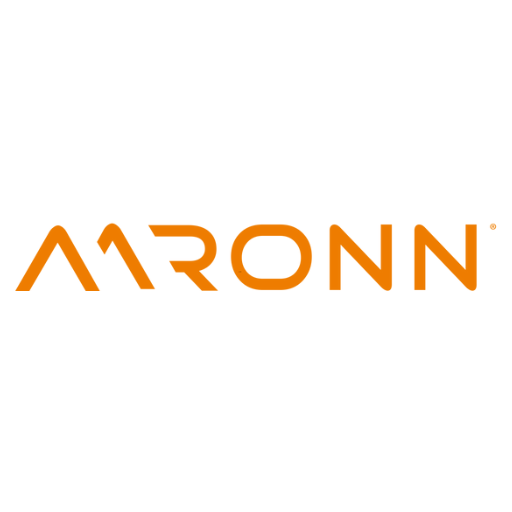Intel’s latest 13th generation of Core processors brings a significant performance increase for embedded systems. The two CPU models Intel Core i9-13900E and Intel Core i9-13900TE are especially designed for IoT applications. The new processors provide a boost for AI applications, moving them out of the data center and increasingly enabling them to be used directly on-site, for automation in industry, autonomous machines, vehicles and display systems, or even for image and video processing due to improved graphics features. Aaronn Electronic is well-positioned with its technology partners to implement these new possibilities in successful projects.
The 13th generation of Intel Core processors (formerly codenamed Raptor Lake) is based on the same architecture and socket (Socket LGA 1700) as the previous version (Alderlake), but brings significant performance improvements with reduced power requirements. Intel points out that the combination of performance, efficiency and flexibility achieved with the 13th Gen CPUs opens up new perspectives especially for “edge” applications. The Intel Core i9-13900E and Intel Core i9-13900TE processor models are designed precisely for this. An important innovation from the point of view of industrial customers is also that selected Raptorlake-P processors are again approved for the industrial temperature range.
Aaronn Electronic has already dealt with platforms from leading manufacturers based on Intel Core processors of the 13th generation, which are particularly suitable for demanding applications. Due to its close relationships with the leading providers, Aaronn can suggest the best possible approach for embedded projects with AI requirements, regardless of the manufacturer.
Applications and strengths of the new Intel processors
Intel sees a wide range of applications for the new CPUs in the embedded sector – from retail, education, banking, restaurants and hotels to the healthcare sector and use in industry, smart cities and transportation. The integrated graphics support brings advantages for digital signage and IFPDs (interactive flat panel displays), for example. The integrated AI acceleration is used, among other things, in analysis applications in medicine or transport. Together, both improve the options for image analysis by machines and real-time capabilities in industry. Industrial PCs and HMIs generally benefit from the improved performance.
Intel has significantly improved the hybrid architecture introduced with the 12th generation (former codename Alderlake) for the new CPU generation. The performance hybrid architecture distinguishes between performance cores and efficiency cores (P-core and E-core). Intel Core processors of the 13th generation have up to 8 P-cores and 16 E-cores.
A performance core provides high single-thread performance and responsiveness for compute-intensive applications. An efficiency core provides multithreaded performance for applications that can run in parallel and handles background tasks, improving multitasking capabilities. In addition, the hybrid architecture helps save energy by using the efficient cores during times of low utilization and only activating the performance cores when needed.
Assigning the right workload to the right core at the right time is the task of Intel Thread Director. This already brings considerable advantages under Windows 10, but will work even better under Windows 11 in the future.
Also interesting for the new processor generation is the long-term software support provided by Windows 10 IoT Enterprise 2021 Long-Term Servicing Channel (LTSC) and Intel’s commitments to long-term availability.
Embedded platforms for Intel’s 13th core generation
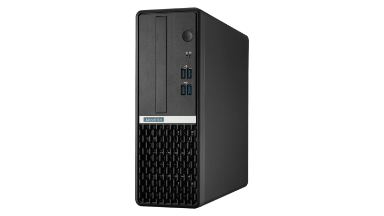
The Advantech IPC-320 is a compact industrial PC with two DIMM sockets (up to 64 GB DDR4-3200), HDMI/DisplayPort, 2 x GbE LAN and eight USB ports, plus one slot each for PCIe x16 (Gen4) and PCIe x4.
Leading board and module providers have already introduced their first products and provided an outlook on their plans.
Advantech has introduced a range of products including the PCE-5133 and PCE-5033 single board computers designed for Intel’s 13th generation processors. These PICMG 1.3 full-size SBCs can support up to 64GB DDR5 5600. The fanless embedded box PC Advantech MIC-770 V3 also supports up to 64 GB DDR5 4800 with two memory slots. It comes with interfaces for two displays (VGA/HDMI), LAN (2x), USB 3.2 (8x), optional NVMe M.2, and iDoor support, making it expandable via Advantech i-Modules.
In the field of compact industrial PCs, the IPC-320 is one of the pioneers in terms of the new Intel processors. It has two DIMM sockets with up to 64 GB DDR4-3200, supports two displays via HDMI/DisplayPort, has 2 x GbE LAN and eight USB ports as well as one slot each for PCIe x16 (Gen4) and PCIe x4. The IPC-320 is expected to be available in 2023, along with other Advantech platforms based on the 13th Gen Intel Core processors.
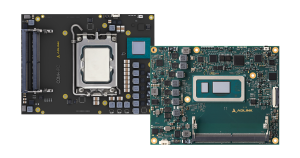
Adlink has introduced two new modules based on the 13th generation Intel Core processors. Express-RLP (right) offers a particularly good performance-per-watt ratio and is suitable for AI projects with 15, 28 or 45 W TDP. The “COM-HPC-cRLS” (left) with up to 24 cores and 32 threads scores when multi-thread and multi-tasking performance is required. It can access up to 128 GB DDR5 SODIMM.
ADLINK is launching the COM-Express module “Express-RLP” and the COM-HPC Client module “COM-HPC-cRLS” for the new Intel processors. ADLINK Express-RLP supports up to 64 GB DDR5 SO-DIMM and PCIe Gen4. It is generally designed for high performance with low power consumption and exceptional performance-per-watt ratio. The module supports AI for IoT applications with 15, 28 and 45 W TDP. For real-time requirements, it is equipped with Intel TCC (Time-Coordinated Computing) and TSN (Time Sensitive Networking).
This also applies to the COM-HPC client module “COM-HPC-cRLS”. It takes up to 128 GB DDR5 memory and is particularly future-proof with COM-HPC and the possible use of PCIe Gen5. Thanks to Intel DL-Boost, which is based on AVX512-VNNI, an interesting feature is the support for AI inference workloads – i.e. the application of models learned from other systems. This facilitates the practical use of AI through learned insights. It also shortens deployment time and reduces traffic overhead. Just as a human recognizes a word in a text or a traffic light in an image immediately, AI applications with inference can provide immediate results without having to analyze or forward large amounts of data for analysis.
COM Express modules based on Intel’s 13th core generation
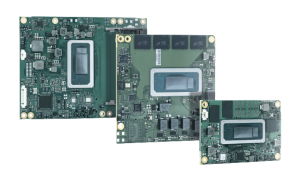
Kontron has introduced the COM Express modules COMe-bRP6, COMe-cRP6 and COMe-mRP10 based on the 13th generation Intel Core processors. With the COMe-mRP10, the Core platform is also available on the COM Express Mini form factor for the first time.
Kontron welcomes Intel’s 13th Core generation with three COM Express modules: COMe-bRP6, COMe-cRP6 and COMe-mRP10. DDR5 SO-DIMMs or LPDDR5 memory with up to 32 GB (COMe-mRP10) or 64 GB are possible. Optional TSN support is available for real-time applications. An NVMe SSD with up to 1TB can also be integrated onboard.
The COMe-mRP10 module is a novelty: For the first time, Kontron offers Intel– Core technology on a module in COM Express Mini format. This enables particularly high performance with an especially small footprint (55 x 84 mm).
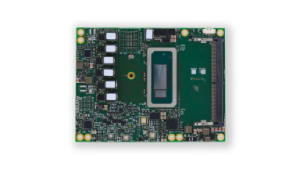
With CALLISTO, SECO shows a COM Express Rel. 3.1 Type 6 module based on the Intel Core processors of the 13th generation. The manufacturer sees areas of application in computationally intensive applications, industrial automation and robotics, intelligent edge computing, transportation, and complex analyses in medical imaging procedures.
SECO is also expanding its COM Express modules with a solution based on Intel’s 13th Core generation. The COM Express Rel. 3.1 Type 6 module “CALLISTO” is also optimized for AI. Contributing factors include Intel Deep Learning Boost (Intel DL Boost) and an Intel distribution of the OpenVINO toolkit for optimized and cross-architecture deep learning inference.
A wide variety of interfaces as well as support for Microsoft Windows 10 and Linux Ubuntu operating systems ensure flexibility. With the integrated Intel Iris XeGraphics, 96 graphics execution units support up to four simultaneously operated 4K displays.
Strong partners: Aaronn and Intel
Aaronn Electronic is Titanium Partner of the Intel® Partner Alliance and thus one of the partners on the highest level of the global partner program of Intel®. Aaronn Electronic has earned this status through the development and realization of customized industrial PC solutions based on the latest Intel® platforms and technologies. Titanium status gives all employees of Aaronn access to a wide range of additional Intel benefits, including the Intel® Solution Marketplace, Intel® Partner University, privileged development support and technical support, from which Aaronn’s customers benefit.
